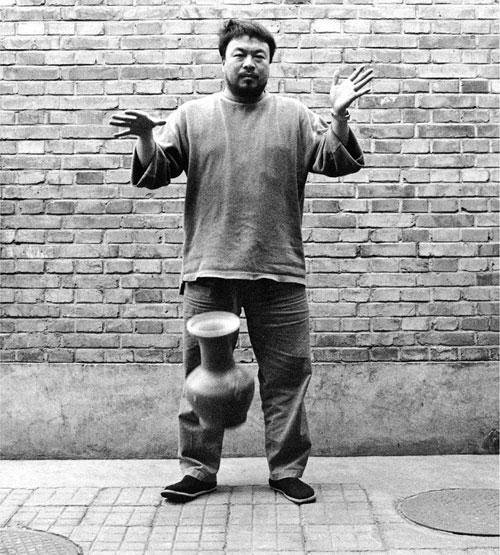
Weiwei Out There: Chinese Artist Breaks into the IMA
Considering he is one of the world’s most famous living artists, Ai Weiwei’s work has been hard to find in the United States. The Chinese political activist who designed the Bird’s Nest stadium for the 2008 Olympics in Beijing has spent nearly as much time in his country’s prisons as his art has spent in American galleries. Which makes it that much more surprising to have a major exhibit of his work opening at the IMA on April 5.
Ai Weiwei: According to What? features more than 30 of Ai’s works, including many that demonstrate why the Chinese government considers the 55-year-old artist (whose name is pronounced “eye way-way”) a dangerous provocateur. Several pieces were part of his project to gather the names of the thousands of children who died in the 2008 Sichuan earthquake because of corruption in the construction industry.
Asian-art scholar and curator Britta Erickson explains that, for many years, Ai worked with found objects—a photo he took of his head after an instance of police brutality, for example, or a pile of porcelain crabs that represents the Chinese 
To get Ai’s work here, the IMA’s contemporary-art department called Mami Kataoka at the Mori Art Museum in Japan, where a version of the exhibit originated in 2009. Kataoka says audiences should pay special attention to Ai’s piece Straight, which is composed of 38 tons of steel rebars that came from the Sichuan earthquake site. They were all bent under the shock, and when they went to market, Ai bought 200 tons and had them straightened as if nothing had happened. The sheer size of the work is overwhelming, so the reference to the Chinese government’s fondness for reconstructing the truth could easily be missed. “I think audiences are free to appreciate the works in any way they like,” Kataoka says. “But it always makes for a deeper understanding if they can open their senses to the context.”
Photos courtesy Ai Weiwei
This article appeared in the April 2013 issue.





